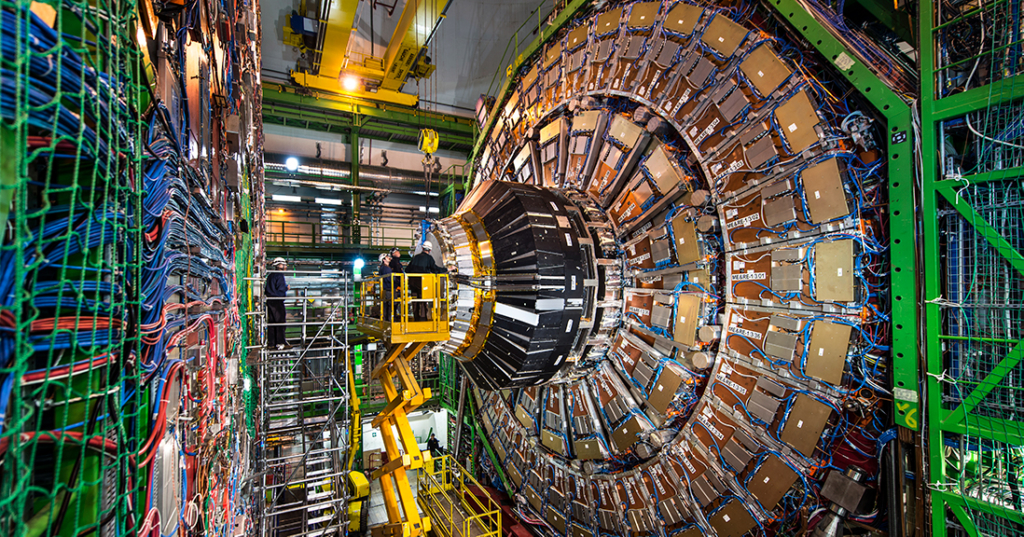A report from the CMS experiment

Supersymmetry is a popular extension of the Standard Model (SM) that has the potential to resolve several open questions in particle physics. As a result of a postulated new symmetry between fermions and bosons, the theory predicts a “superpartner” for each SM particle. The lightest of these new particles could be what makes up dark matter, while additional new superpartners could resolve the question of why the Higgs boson has a relatively low mass. Many searches for supersymmetry have already been performed by the ATLAS and CMS collaborations, but most have focused on strongly interacting superpartners that could be very heavy. It is possible, however, that electroweak production of supersymmetric particles is the dominant or only source of superpartners accessible at the LHC.
Supersymmetric events are expected to have an imbalance in transverse momentum
The unprecedented data volume of LHC Run 2 provides a unique opportunity to search for rare processes such as electroweak production of supersymmetric particles. A recent result from the CMS collaboration uses the Run-2 dataset to search for the superpartners of the electroweak bosons, called charginos and neutralinos. Events with three or more charged leptons, or two leptons of the same charge, were analysed. Such events are relatively rare in the SM, and, if they exist, charginos and neutralinos are predicted to create an excess of events with these topologies. Supersymmetric events are also expected to have an apparent imbalance in transverse momentum, because the lightest supersymmetric particle should evade detection. Correlations between the multiple leptons in the events, and between the leptons and the momentum imbalance, can be used to define a set of discriminating variables sensitive to chargino and neutralino production. These variables are used to assign the selected events into several search regions that address different possible signals of the production and decay of supersymmetric particles. Making such a multivariate binning optimal in every corner of phase-space, and for any possible manifestation of supersymmetry, is a challenging task.
Parametric machine learning
Events with three electrons and/or muons provide the bulk of the sensitivity by striking the best balance between signal purity and yields. A novel search approach is used that aims at better capturing the complexity of the events than is possible using predetermined search regions: parametric machine learning. The aim is to achieve the maximum sensitivity for any parameter choice nature might have made, as supersymmetry is not one model, but a class of models. Variations in the masses of the superpartners can substantially modify the observable signatures. Parametric neural networks were trained to find charginos and neutralinos with the unknown mass parameters added as input variables to the training. The network can evaluate the data at fixed values of the mass parameters, effectively performing a dedicated search for a signal with given masses in the data (figure 1).
The parametric neural network, together with a new optimised event binning of the other event categories, makes this analysis the most powerful search for charginos and neutralinos carried out by the CMS collaboration so far. The neural network alone results in a sensitivity boost that ranges from 30% to more than 100%. Substantial improvements occur for models where the decay of the charginos and neutralinos are mediated by the superpartners of leptons. The improvements become even larger when the mass splitting between sleptons and the chargino is relatively small. The data show no evidence for electroweak superpartner production, and chargino masses up to 1450 GeV, compared to 1150 GeV in earlier CMS searches for this scenario, are excluded at 95% confidence.
Further reading
CMS Collaboration 2021 CMS-PAS-SUS-19-012.








